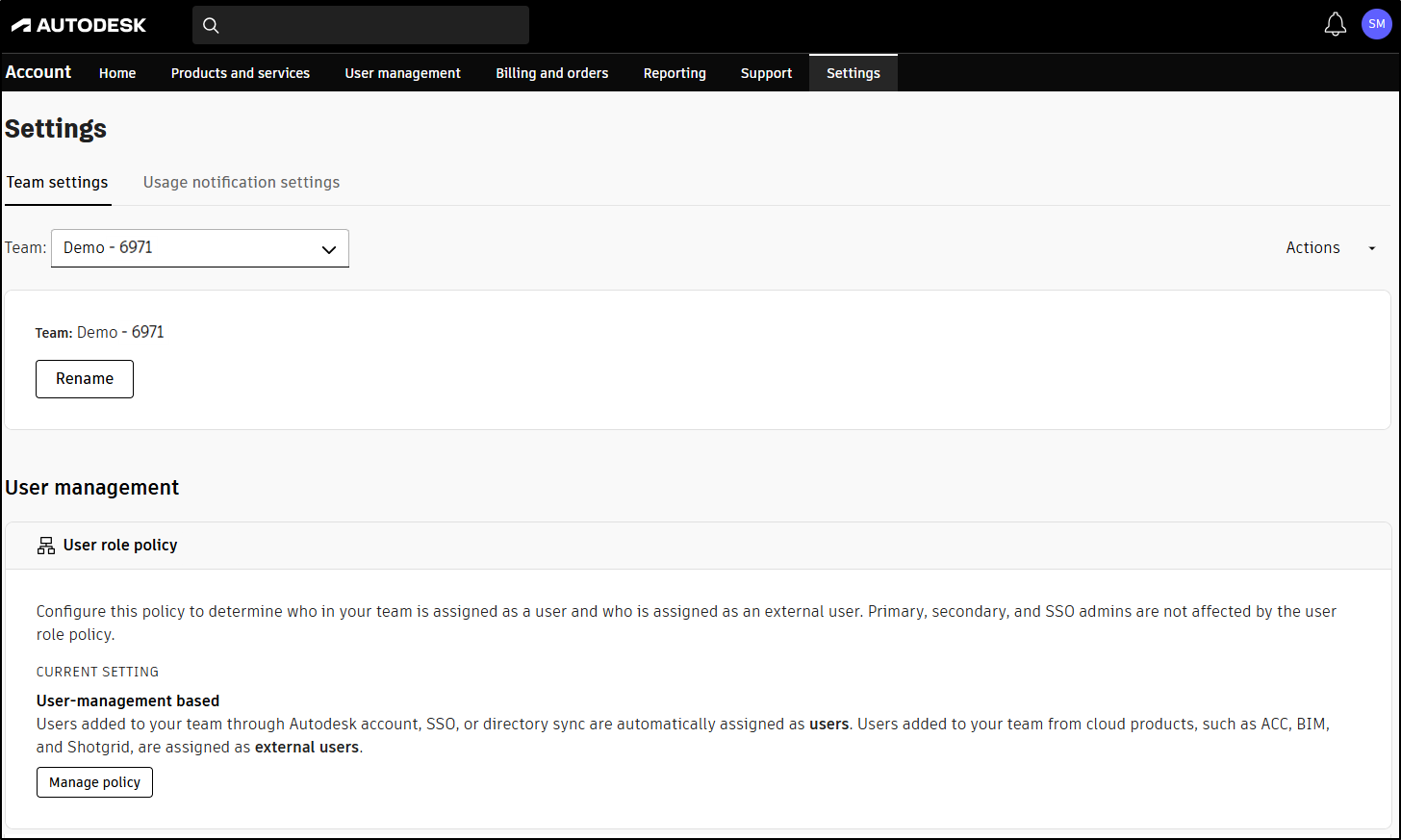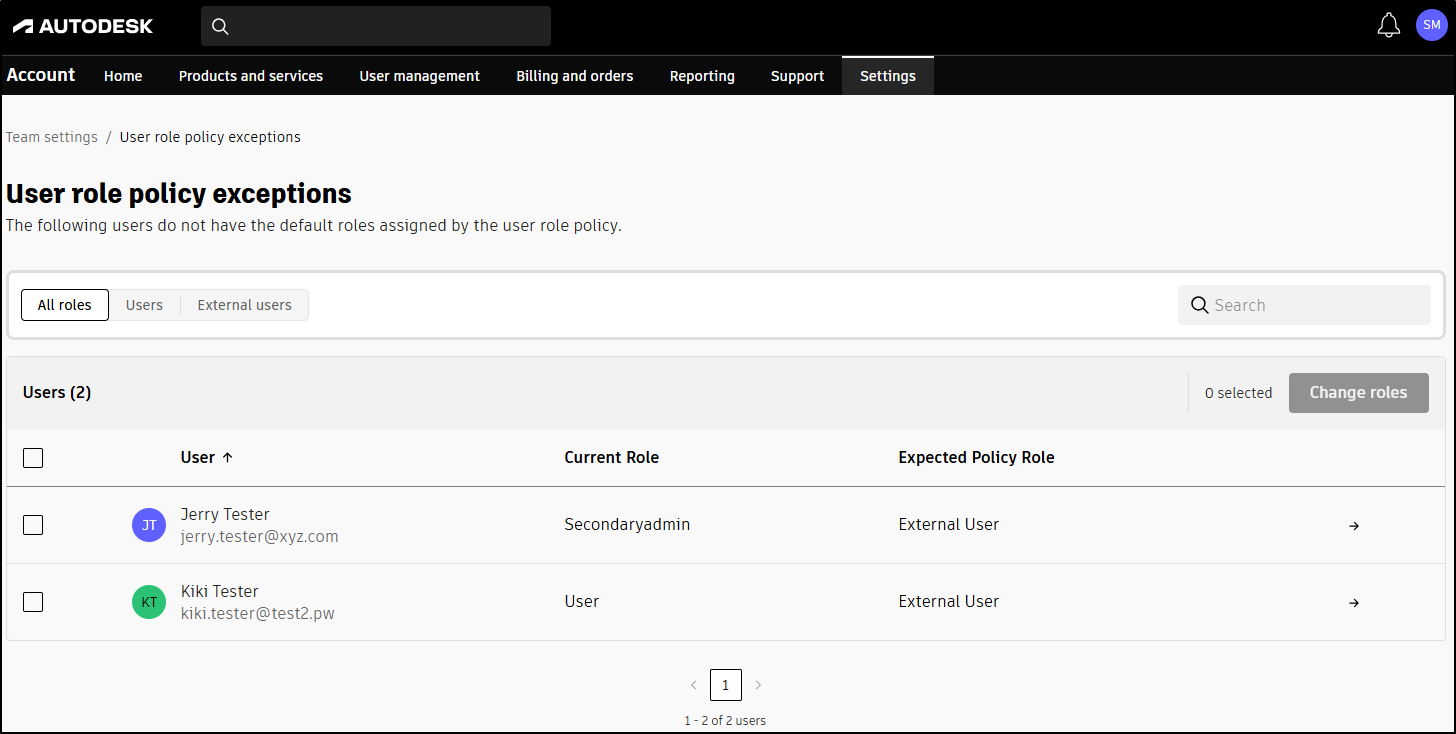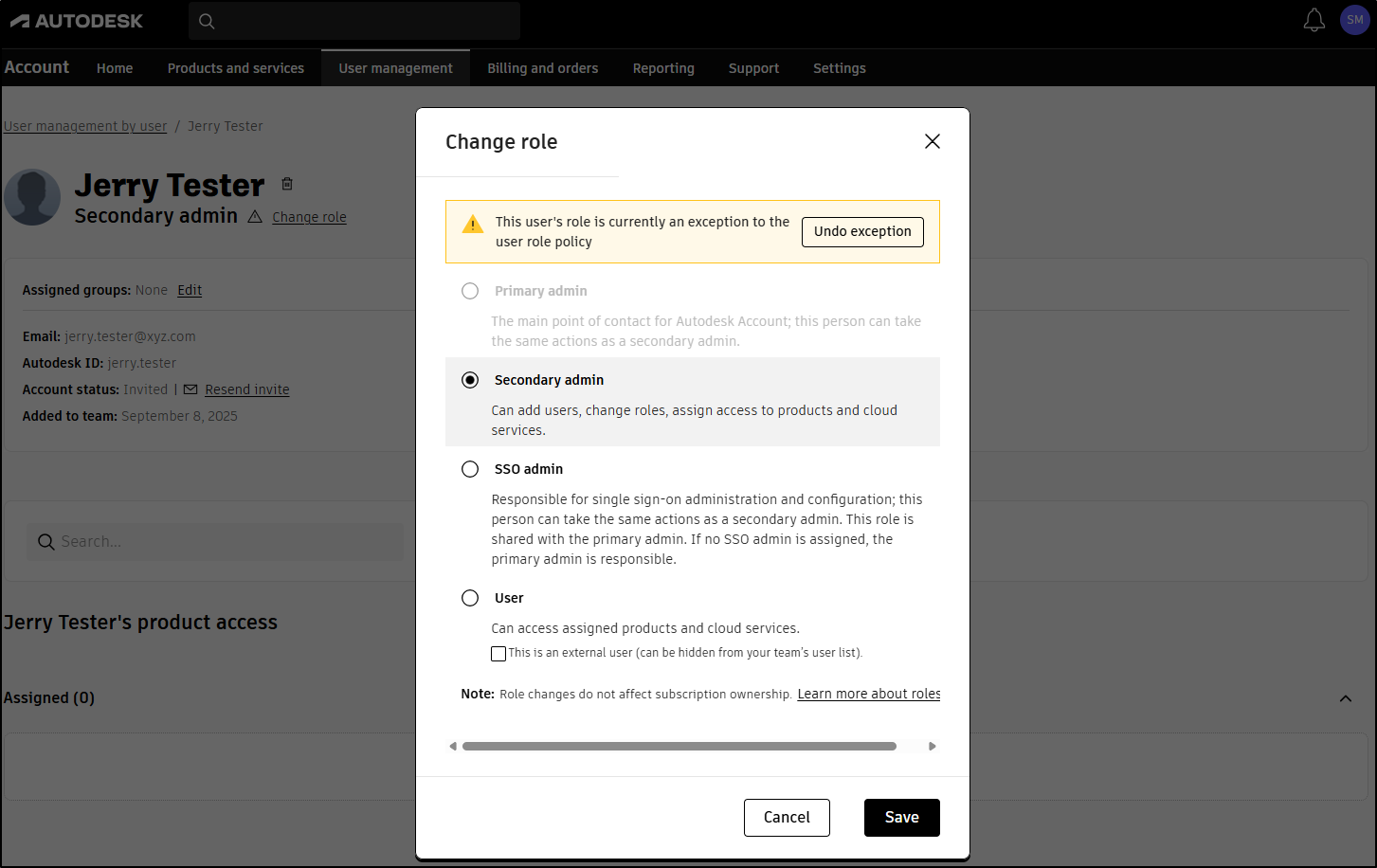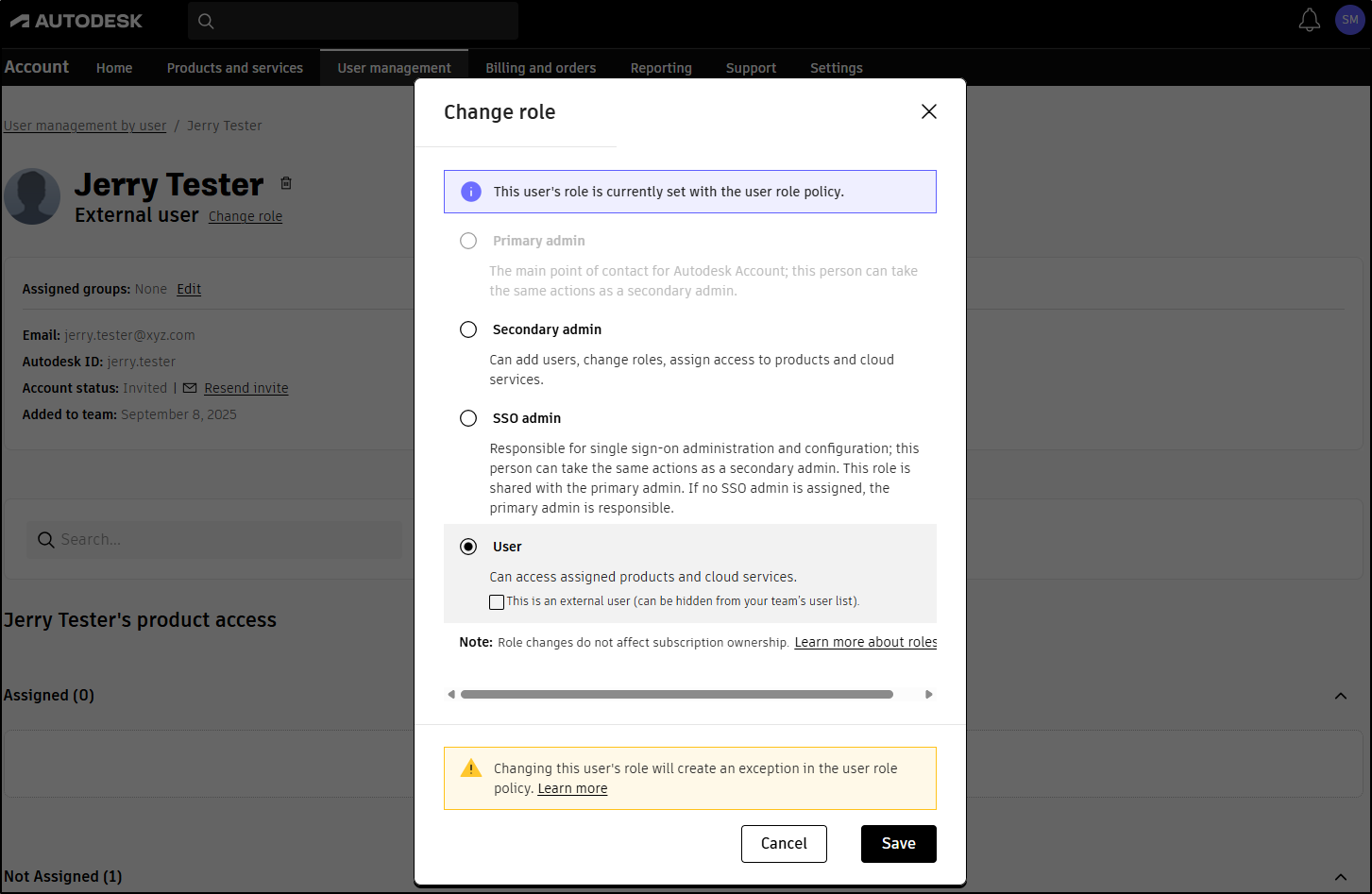& Construction

Integrated BIM tools, including Revit, AutoCAD, and Civil 3D
& Manufacturing

Professional CAD/CAM tools built on Inventor and AutoCAD
The user role policy lets you designate users as either an external user or a user.
An external user is someone outside your organization, such as a contractor or vendor, who needs access to Autodesk products or services. Previously referred to as a guest user, this role ensures secure collaboration without exposing sensitive internal resources.
You can decide which policy applies to your external users, either the default settings in user management or by rules based on domain names. This helps you control whether someone is treated as an external user or a standard user, making it simpler to manage access securely and transparently.
When you use the default user management based policy, anyone added to your team through an Autodesk cloud collaboration product, like Autodesk BIM Collaborate Pro, Autodesk Build, or Autodesk Takeoff, is automatically set as an external user in the Autodesk account.
If you choose to use domain based rules, you can set up a list of approved email domains for your team. This lets you automatically manage who is considered a standard or external user. Anyone added with an email from an approved domain will be assigned as a standard user, while users with emails from other domains will automatically be set as external users.
To change the role of the users who don’t align with your domain based policy, see View user role policy exceptions.
Note: Include your organization's domain for single sign-on (SSO) or directory sync in your domain based rules. This ensures that team members using SSO are automatically recognized as standard users.
Note: If you set up a domain rule, existing users on your team will keep their existing roles. If any existing users don’t meet the domain policy, they’ll be marked as exceptions. See View user role policy exceptions.
You can remove domains at any time. When removing domains, at least one must remain.
Note: Existing users with the removed domain will be marked as exceptions. See view user role policy exceptions.
You can review and change users who don’t align with your domain based policy. Compare current role with expected role.
You can filter users to see all roles, or just those with the standard user role or the external user role.
Note: When you select several users at once, you’ll need to assign them the same new role.
You’ll see alerts in your account whenever a user doesn’t follow your domain based rules.
You’ll see a warning sign in a user’s details if their role doesn’t follow your domain based rules. This means the domain based rule is on, and the user is an exception. To change a user’s role, click change role or go to your team settings to see all your user role exceptions.
When you change a user's role to match your domain rule, you'll see a message letting you know their role is currently an exception. If you want this user to follow your domain rules, select Undo exception.
If you change a user’s role that follows your domain rules, you’ll see a message saying this update will create an exception. Change the role if you don’t want the user to follow your domain policy. To remove the exception, go to the user’s details or your team settings to view all exceptions.
If you apply the default user-management based policy, the system adds users from single sign-on (SSO) or active directory (AD) sync as standard users. If you turn on the domain based policy, the system adds SSO or AD sync users as standard users only if their domain matches your policy. If their domain doesn’t match, the system adds them as external users.
Example: If you turn on the domain based external user rule and only include domain cba.net, but your SSO or AD domain is abc.net, the system adds users synced through SSO or AD as external users in your user management.
You won’t see any changes to existing user roles. Users whose roles don't align with your domain based policy appear as exceptions. Go to your team settings to view exceptions.
We now call guest users "external users." You don’t need to change how you work, only the name has changed.
No, this change will not affect your default product assignments. We are only renaming guest users to external users. You will assign products the same way as before.
Yes, you can see which users are external in your usage reports.
You can manage domain based user role exceptions from the view exceptions menu or by updating the role on the user’s details page. For more information, go to Designate external users.
If you add a user whose email domain isn’t in your domain policy, Autodesk marks that user as external. This happens whether you add the user through an Autodesk cloud collaboration product or directly in Autodesk account user management. We always follow your domain policy when setting user roles.
The Assistant can help you find answers or contact an agent.
What level of support do you have?
Different subscription plans provide distinct categories of support. Find out the level of support for your plan.




